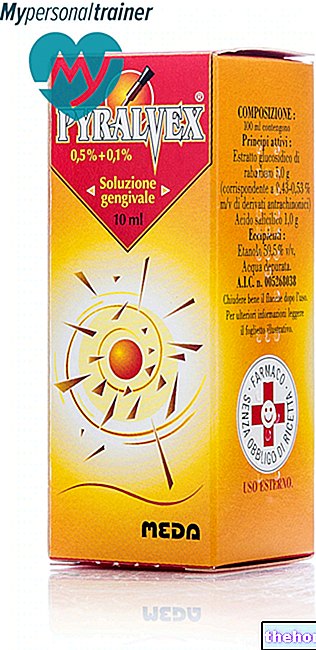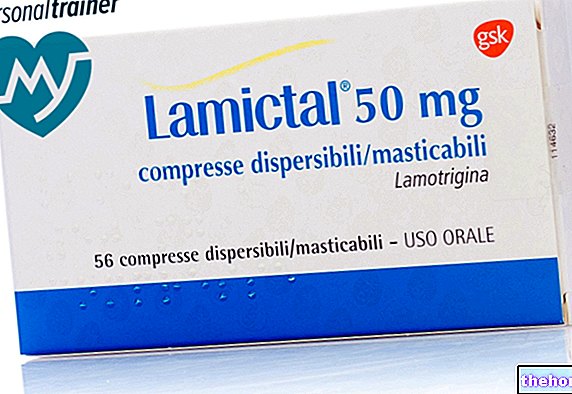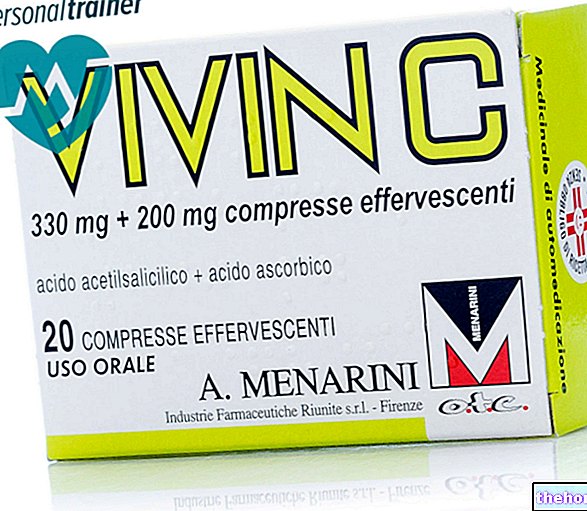Active ingredients: Terbinafine
LAMISILMONO 1% cutaneous solution
Why is Lamisilmono used? What is it for?
LAMISILMONO is a single dose treatment for tinea pedis (athlete's foot).
LAMISILMONO works by killing the fungi that cause tinea pedis (athlete's foot). When applied to the feet, it leaves a smooth, barely visible film that remains on the skin releasing the active ingredient into the skin.
How do you know if you have tinea pedis (athlete's foot)
Tinea pedis (athlete's foot) appears only on the feet. It often appears between the toes but can spread to the soles and sides of the feet.
The most common type of tinea pedis (athlete's foot) causes cracking or peeling of the skin. You may also have mild swelling, blistering, or wet sores. This may often be associated with itching or burning sensations.
If you are not sure if your symptoms are really due to tinea pedis (athlete's foot), consult your doctor or pharmacist before using LAMISILMONO.
Contraindications When Lamisilmono should not be used
Do not use LAMISILMONO
If you are allergic to terbinafine or any of the other ingredients of this medicine
Tell your doctor or pharmacist if this applies to you and you are not using LAMISILMONO.
Precautions for use What you need to know before taking Lamisilmono
Talk to your doctor or pharmacist before taking LAMISILMONO
- Do not use this medicine if you suffer from long-term fungal infections of the soles and heels of the feet with associated thickening and / or pronounced peeling of the skin. If you think you may have this condition, you should consult your doctor as you may need another medicine.
- LAMISILMONO is for external use only. Do not use it in your mouth and do not swallow it.
- Avoid contact with your face, eyes, or damaged skin as alcohol may be irritating.
- If the solution accidentally gets in your eyes, rinse thoroughly with running water. If any problems persist, see your doctor.
- LAMISILMONO contains alcohol. Keep away from open flames.
Children and adolescents
Children and adolescents under the age of 18 should not use LAMISILMONO.
Interactions Which drugs or foods can modify the effect of Lamisilmono
Tell your doctor or pharmacist if you are using, have recently used or might use any other medicines.
Do not apply any other medicines or treatments to your foot (including those you may have bought without a prescription) at the same time as LAMISILMONO.
Warnings It is important to know that:
Pregnancy, breastfeeding and fertility
- If you are pregnant, think you may be pregnant or are planning to have a baby, ask your doctor or pharmacist for advice before using this medicine. LAMISILMONO should not be used during pregnancy unless strictly necessary.
- Do not use LAMISILMONO while breastfeeding. Do not allow infants to come into contact with any treated area, including the breasts.
Driving and using machines
- The use of LAMISILMONO does not affect the ability to drive and use machines.
Dose, Method and Time of Administration How to use Lamisilmono: Posology
Use this medicine exactly as described in this leaflet or as your doctor has told you to. If in doubt, consult your doctor or pharmacist.
The recommended dose is to apply the solution once, as indicated below
Instructions for Use:
Adults
- It is best to apply LAMISILMONO after a shower or bath.
- This is a one-time treatment.
- Wash both feet and dry them thoroughly.
- Wash and dry your hands.
- Remove the cap from the tube.
- You apply it to both feet - you use about half of the tube for each foot, as required to cover the skin. Complete one foot before treating the other.
- Apply with your fingers on each foot as shown below. Spread evenly on the skin between the fingers, underneath and all around. Then apply to the sole and sides of his foot.
- Do not rub or massage.
- Treat the other foot the same way, even if the skin looks healthy. This is to make sure you get rid of the fungus completely - this can be present on the other foot even without marks.
- Let the product dry for 1-2 minutes before putting on your normal footwear.
- Wash your hands with warm soapy water after application.
- Do not wash or wet your feet for 24 hours after applying LAMISILMONO. Tap your feet lightly to dry them after washing them gently.
- Do not apply to the skin a second time.
How often and for how long to use LAMISILMONO
Apply only once. Do not apply a second time.
LAMISILMONO starts killing the mushrooms immediately. The formed film indicates that the active ingredient penetrates his skin where it continues to act for several days.
Your skin should start to improve within a few days, but it may take up to 4 weeks for your skin to heal completely.
If you do not notice any signs of improvement within one week after applying LAMISILMONO, consult your doctor or pharmacist who will recommend you.
Do not use the product a second time during the same athlete's foot episode if it has not worked after the first application.
You must apply LAMISILMONO on both feet, even if the marks are only visible on one foot. This ensures complete elimination of the fungus: it may be present in other parts of the foot even if no lesions are visible.
Once applied to the feet, the medicine dries quickly becoming a transparent film.
- The tube contains enough medicine to treat both feet
LAMISILMONO releases the active ingredient into the skin where it remains for a number of days to eliminate the fungus that causes athlete's foot. For best results, feet should not be washed or wet for 24 hours after application.
To promote treatment
Keep the affected area clean by washing it regularly after the first 24 hours. Dry it thoroughly without massaging.Try not to scratch the area even if it is itchy, as this could cause further damage and slow the healing process or spread the infection.
As these infections can be passed on to other people, remember to keep only your towel and clothing to yourself and do not share them with others. Wash your clothes and towels frequently to protect yourself from reinfection.
Overdose What to do if you have taken too much Lamisilmono
If you accidentally swallow some product
Contact your doctor who will advise you what to do. The alcohol content must be taken into account
If the product comes into contact with the face or eyes
Rinse your face or eyes with running water. Go to your doctor if you still have any discomfort.
[If you have any further questions on the use of this medicine, ask your doctor or pharmacist.]
Side Effects What are the side effects of Lamisilmono
Like all medicines, this medicine can cause side effects, although not everybody gets them.
Some people may be allergic to LAMISILMONO, which can cause swelling and pain, skin rashes, or hives. This has been reported very rarely (may affect up to 1 in 100 people).
If you experience an allergic reaction or any of the above symptoms when using this product, remove the foil with denatured alcohol (can be purchased at the pharmacy), wash your feet with warm soapy water, rinse and dry them and consult your doctor or pharmacist.
The following side effects have been reported:
uncommon (they may affect up to 1 in 100 people)
Application site reactions which may include dry skin, skin irritation or a burning sensation.
These reactions are usually mild and transient.
If you get any side effects, please tell your doctor or pharmacist. This includes any possible side effects not listed in this leaflet.
Expiry and Retention
Keep this medicine out of the sight and reach of children.
Do not use LAMISILMONO after the expiry date which is stated on the carton and tube. The expiry date refers to the last day of the month indicated.
Store in the original package to protect from light. Do not store above 30 ° C.
Do not throw any medicines via wastewater or household waste. Ask your pharmacist how to throw away medicines you no longer use. This will help protect the environment.
What LAMISILMONO contains
- The active ingredient is terbinafine (as hydrochloride). Each gram of cutaneous solution contains 10 mg of terbinafine (as hydrochloride).
- The other ingredients are: acrylates / octylacrylamide copolymer, hydroxypropylcellulose, medium chain saturated triglycerides and ethanol.
Description of the appearance of LAMISILMONO and contents of the pack
LAMISILMONO is a clear or slightly opaque viscous solution. It is available in 4g tubes.
Source Package Leaflet: AIFA (Italian Medicines Agency). Content published in January 2016. The information present may not be up-to-date.
To have access to the most up-to-date version, it is advisable to access the AIFA (Italian Medicines Agency) website. Disclaimer and useful information.
01.0 NAME OF THE MEDICINAL PRODUCT
LAMISILMONO 1% SKIN SOLUTION
02.0 QUALITATIVE AND QUANTITATIVE COMPOSITION
Each gram of cutaneous solution contains 10 mg of terbinafine (as hydrochloride).
For the full list of excipients, see section 6.1.
03.0 PHARMACEUTICAL FORM
Skin solution.
Clear or slightly opaque viscous solution.
04.0 CLINICAL INFORMATION
04.1 Therapeutic indications
Treatment of tinea pedis (athlete's foot) (see section 4.4).
04.2 Posology and method of administration
Cutaneous use.
Dosage
Adults: a single application.
Lamisilmono only needs to be applied once to both feet, even if the lesions are visible on one foot only. This ensures the elimination of fungi (dermatophytes) that may be present in areas of the foot where no lesions are visible.
Method of administration
Patients should wash and dry both feet and hands before applying the medicine. They have to treat one foot, then the other.
Beginning with the toes, patients should apply a thin layer between and around the toes evenly, as well as cover the sole and sides of the foot by up to 1.5cm. The medicine should be applied in the same way to the other foot, even if the skin looks healthy. The medicine should be allowed to dry for 1-2 minutes until it forms a film. Patients should then wash their hands. Lamisilmono should not be massaged into the skin.
For best results, treated areas should not be washed for 24 hours after application. It is therefore recommended to apply Lamisilmono after a shower or bath and wait until the same time the next day before gently washing your feet again. ; after washing, the feet should be dried by dabbing gently.
Patients should use the required amount to cover both feet as illustrated above. Any remaining medicine should be discarded.
Relief of clinical symptoms is usually seen within a few days.
If no signs of improvement are seen after one week, the diagnosis should be reviewed and patients should then consult a physician. There are no data on repeat treatment with Lamisilmono. Therefore, a second treatment cannot be recommended during the same athlete's foot episode.
Dosage in special populations:
Pediatric population
Lamisilmono has not been studied in the pediatric population. Therefore its use is not recommended in patients under 18 years of age.
Elderly patients
No dosage adjustment is necessary.
04.3 Contraindications
Hypersensitivity to the active substance or to any of the excipients listed in section 6.1.
04.4 Special warnings and appropriate precautions for use
Lamisilmono should be used with caution in patients with injuries where alcohol may be irritating. It should not be used on the face.
Lamisilmono is for external use only. It can be irritating to the eyes.
In case of accidental contact with the eyes, rinse the eyes thoroughly with running water.
Lamisilmono must be kept out of the reach of children.
Lamisilmono is not recommended for the treatment of chronic hyperkeratotic ("moccasin" type) plantar tinea pedis.
In the event of an allergic reaction, the film should be removed with an organic solvent such as denatured alcohol and the feet washed with warm soapy water.
Information concerning excipients
Lamisilmon contains ethanol; keep away from open flames.
04.5 Interactions with other medicinal products and other forms of interaction
There are no known drug interactions with Lamisilmono.
04.6 Pregnancy and lactation
Pregnancy
There is no clinical experience with terbinafine in pregnant women.
Fetal toxicity studies in animals do not indicate adverse effects (see section 5.3). Lamisilmono should not be used during pregnancy unless clearly needed.
Feeding time
Terbinafine is excreted in breast milk. Lamisilmono should not be used while breastfeeding.
Fertility
Animal studies did not show any effect of terbinafine on fertility (see section 5.3).
04.7 Effects on ability to drive and use machines
Lamisilmono does not affect the ability to drive and use machines.
04.8 Undesirable effects
Undesirable effects include mild and transient reactions at the application site. In very rare cases, allergic reactions can occur.
Skin and subcutaneous tissue disorders:
Very rare (pruritus, bullous dermatitis and urticaria.
General disorders and administration site conditions:
Uncommon (> 1 / 1,000,
04.9 Overdose
In case of accidental ingestion, the alcohol content (81.05% w / w) of Lamisilmono must be taken into consideration.
An overdose is very unlikely to occur as the medicine is for single application, for cutaneous use and the tube contains only the amount needed for one application. Accidental ingestion of the product contained in a 4 g tube containing 40 mg of terbinafine is much reduced compared to taking a 250 mg Lamisil tablet (oral dosage unit for adults). However, should several tubes of Lamisilmono be ingested inadvertently, adverse effects similar to those seen following overdose with Lamisil tablets are to be expected. These include headache, nausea, epigastric pain, and dizziness.
Treatment of overdose
In case of accidental ingestion, the recommended treatment of overdose is to eliminate the active substance, mainly by administering activated charcoal, and if necessary, to provide symptomatic supportive therapy.
05.0 PHARMACOLOGICAL PROPERTIES
05.1 Pharmacodynamic properties
Pharmacotherapeutic group: other antifungals for topical use.
ATC code: D01AE15.
Terbinafine is an allylamine that specifically interferes on the biosynthesis of fungal sterols in an initial step. This leads to a deficiency of ergosterol and an intracellular accumulation of squalene, resulting in death of the fungal cell. Terbinafine acts by inhibiting the fungal cell. squalene epoxidase in the fungal cell membrane. The enzyme squalene epoxidase is not bound to the cytochrome P450 system. Terbinafine does not affect the metabolism of hormones or other drugs.
Terbinafine possesses a broad spectrum of antifungal activity in fungal skin infections caused by dermatophytes such as Trichophyton (eg.T. rubrum, T. mentagrophytes, T. verrucosum, T. violaceum), Microsporum canis and Epidermophyton floccosum. At low concentrations, terbinafine is fungicide against dermatophytes.
Patient studies have shown that the application of a single dose of Lamisilmono 1% cutaneous solution to both feet has been shown to be effective in patients with tinea pedis (athlete's foot) who had interdigital lesions, and which extended to adjacent areas. skin of the sides and soles of the feet.
However, a direct comparison of efficacy with other topical forms of Lamisil has not been performed, therefore no judgment can be made at present regarding the relative efficacy of Lamisilmono 1% cutaneous solution compared to other topical forms.
05.2 Pharmacokinetic properties
Once applied to the skin, Lamisilmono 1% cutaneous solution forms a film on the skin. Terbinafine is likely to be bound or retained in the lipid components of the stratum corneum, which may play a role in the long elimination half-life of this drug from the stratum corneum. Terbinafine remains in the stratum corneum for up to 13 days, at levels that are in excess of the in vitro Minimum Inhibiting Concentration of terbinafine on dermatophytes.
Washing the film decreases the content of terbinafine in the stratum corneum and therefore washing must be avoided for the first 24 hours following application to allow maximum penetration of the stratum corneum of the terbinafine.
Occlusion, probably to be considered in therapeutic use, will result in a 2.7-fold increase in exposure of the stratum corneum to terbinafine following a single application of Lamisilmon 1% cutaneous solution. Although not studied, penetration into the stratum corneum of terbinafine is probably greater in patients with tinea pedis than in healthy volunteers on the back. This is due to the occlusive effect found in the interdigital spaces, which is likely increased by "wearing shoes, rather than any effect caused by impaired" integrity of the stratum corneum.
Systemic bioavailability is very low in both healthy volunteers and patients.
An "application of Lamisilmono 1% cutaneous solution on the back, on an" area 3 times greater than the area of both feet, resulted in an "estimated exposure to terbinafine of less than 0.5% of the exposure following administration for orally of a 250 mg tablet.
05.3 Preclinical safety data
In long-term studies (up to 1 year) in rats and dogs, no marked toxic effects were seen in either species up to oral doses of approximately 100 mg / kg per day. At high oral doses, the liver and possibly also the kidney have been identified as potential target organs.
In a 2-year oral carcinogenicity study in mice, there were no neoplastic or other abnormal findings attributable to treatment with doses up to 130 (males) and 156 (females) mg / kg per day. In a 2-year oral carcinogenicity study in rats at the highest dose, 69 mg / kg per day, an increased incidence of liver tumors was observed in males. The changes, which may be associated with proliferation of peroxisomes, have been shown to be species-specific since they were not observed in the carcinogenicity study in mice or in other studies in mice, dogs or monkeys.
During studies with high oral doses of terbinafine in monkeys, refractive irregularities in the retina were observed at higher doses (the no-toxic level was 50 mg / kg). These irregularities were associated with the presence of a terbinafine metabolite in ocular tissue and disappeared after discontinuation of the drug. They were not associated with histological changes.
A standard set of tests to evaluate in vitro And in vivo genotoxicity did not show any mutagenic or clastogenic potential for the drug.
No adverse effects on fertility or other reproductive parameters were observed in studies in rats and rabbits.
Repeated application to the skin of Lamisilmono 1% cutaneous solution on rats and miniature pigs produces plasma levels of terbinafine that are at least 50-100 times lower than those established as no adverse effect levels in terbinafine animal toxicity studies, therefore use of the medicinal product is not expected to produce any systemic adverse effects.
Lamisilmon 1% cutaneous solution was well tolerated in numerous tolerability studies and did not induce sensitization.
The safety of the acrylates / octylacrylamide copolymer, a recently used excipient in topical dermatological medicinal products, has been established based on conventional studies of single and repeated dose toxicity, genotoxicity and local tolerability.
06.0 PHARMACEUTICAL INFORMATION
06.1 Excipients
Acrylates / octylacrylamide copolymer; hydroxypropylcellulose; medium-chain saturated triglycerides; ethanol.
06.2 Incompatibility
Not relevant.
06.3 Period of validity
3 years.
06.4 Special precautions for storage
Store in the original package to protect from light. Do not store above 30 ° C.
06.5 Nature of the immediate packaging and contents of the package
4 g laminated aluminum tube (polyethylene-aluminum-polyethylene) with polyethylene screw cap.
06.6 Instructions for use and handling
No special instructions.
07.0 MARKETING AUTHORIZATION HOLDER
Novartis Farma S.p.A., Largo U. Boccioni 1 - Origgio (VA).
08.0 MARKETING AUTHORIZATION NUMBER
4 g tube - A.I.C. n. 038282012 / M.
09.0 DATE OF FIRST AUTHORIZATION OR RENEWAL OF THE AUTHORIZATION
First authorization: January 2008.
Renewal: November 4, 2010.
10.0 DATE OF REVISION OF THE TEXT
January 20, 2013.




























